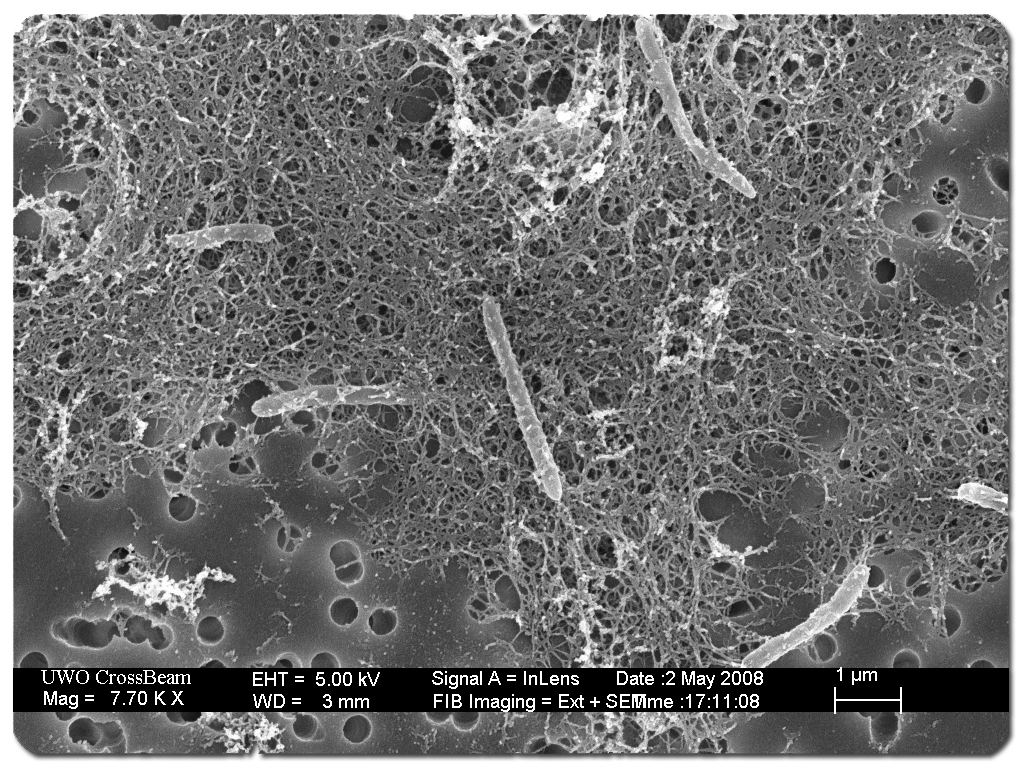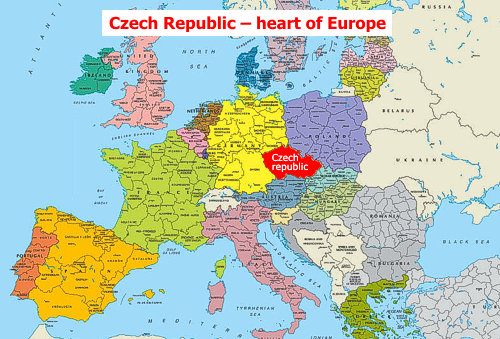
Blog
-
Geiger Readings for Feb 27, 2017
Ambient office = 113 nanosieverts per hourAmbient outside = 59 nanosieverts per hourSoil exposed to rain water = 66 nanosieverts per hourLemon from Central Market = 121 nanosieverts per hourTap water = 156 nanosieverts per hourFilter water = 130 nanosieverts per hour -
Desulforudis Audaxviator Is A Bacterium That Lives On Heat Generated By Uranium In The Earth’s Crust
Desulforudis audaxviator is a bacterium that lives in the depths of the Earth. It has been found almost two miles below the Earth’s surface. There is no light where it lives and the ground water is over two hundred and eighty degrees Fahrenheit. There is also no oxygen or other organic materials there. The bacterium extracts energy from the decay of uranium in the rocks.
Researchers at the Brazilian Synchrotron Light Laboratory and the University of São Paulo say that this bacterium is a good model for considering the possibility of extraterrestrial life. One of the principle investigators told a Brazilian news agency, “We studied the possible effects of a biologically usable energy source on Europa based on information obtained from an analogous environment on Earth.”
NASA has suggested that there may be hydrothermal vents on Europa like the kind found on the sea floor on Earth. These vents spew chemicals and heat which provides sustenance for life that surrounds the vents. While the hydrothermal organisms do not rely on sunlight for energy, they do rely on oxygen in the water that is generated by other organisms near the surface which do utilize sunlight.
Desulforudis audaxviator does not rely on oxygen in the water to survive. It was found in the ground water from the Mponeng gold mine in South Africa. It is the only life form in its ecosystem and does not rely on any other organisms. The principle researcher says “This very deep subterranean mine has water leaking through cracks that contain radioactive uranium. The uranium breaks down the water molecules to produce free radicals. The free radicals attack the surrounding rocks, especially pyrite, producing sulfate. The bacteria use the sulfate to synthesise ATP [adenosine triphosphate], the nucleotide responsible for energy storage in cells. This is the first time an ecosystem has been found to survive directly on the basis of nuclear energy.”
The researchers say that the same conditions that form the environment for desulforudis audaxviator may exist on Europa. According to NASA, life on Europa would require three ingredients. These three ingredients are water, heat and chemicals necessary to life.
Astronomers believe that there is a vast ocean on Europa beneath the icy crust. Heat is generated by the elliptical orbit of Europa around Jupiter. The tidal forces intensify at certain points in Europa’s orbit. The resulting deformations of the moon results in the generation of heat. The chemistry of Europa’s ocean is the most difficult to identify.
The principle investigator says that radioactive materials have “been detected and measured on Earth, in the meteorites that come to Earth, and on Mars. So we can say with some certainty that this must have occurred on Europa as well. In our study, we worked with three radioactive elements: uranium, thorium and potassium, the most abundant in the terrestrial context. Based on the percentages found on Earth, in meteorites and on Mars, we can predict the amounts that probably exist on Europa.” The research showed that radioactive materials probably exist on Europa in the same amounts that are found on Earth. The only open question is whether or not there are sufficient pyrites on Europa to provide the sulfur needed by Desulforudis audaxviator-type organisms.
The principle investigator said “The ocean bed on Europa appears to offer very similar conditions to those that existed on primitive Earth during its first billion years. So studying Europa today is to some extent like looking back at our own planet in the past. In addition to the intrinsic interest of Europa’s habitability and the existence of biological activity there, the study is also a gateway to understanding the origin and evolution of life in the Universe.”
Desulforudis audaxviator:
-
Geiger Readings for Feb 26, 2017
Ambient office = 78 nanosieverts per hourAmbient outside = 127 nanosieverts per hourSoil exposed to rain water = 130 nanosieverts per hourCrimini mushroom from Central Market = 136 nanosieverts per hourTap water = 80 nanosieverts per hourFilter water = 75 nanosieverts per hour -
Nuclear News Roundup Feb 25, 2017
Senior Congress leader Digvijaya Singh today requested Prime Minister Narendra Modi to reconsider the decision to set up a 1400 MW nuclear power plant in tribal-dominated Mandla district of Madhya Pradesh. Economictimes.indiatimes.com
New Jersey lawmakers try yet another version of contentious nuclear subsidy bill. Njspotlight.com
Mohsen Rezaei, secretary of Iran’s Expediency Council and former chief of Iran’s Revolutionary Guard, said the Islamic Republic will “level Tel Aviv to the ground” if Israel carries out an attack, Fars News Agency, Iran’s semi-official news site, reported. Unitedwithisrael.com
In early January, 2018, the CEO of US Nuclear Corp. (OTC: UCLE) flew to Beijing, China with the purpose of discussing how US Nuclear can help improve Chinese nuclear customer’s access to the advanced, high-quality, more competitively priced products they need in order to meet China’s aggressive power plant construction growth targets. The goal is to expand USN offerings and to achieve substantial growth for US Nuclear markets in China beginning in 2018 and into the longer term. Globenewswire.com
-
Geiger Readings for Feb 25, 2017
Ambient office = 123 nanosieverts per hourAmbient outside = 144 nanosieverts per hourSoil exposed to rain water = 142 nanosieverts per hourBeefsteak tomato from Central Market = 77 nanosieverts per hourTap water = 91 nanosieverts per hourFilter water = 86 nanosieverts per hour -
Geiger Readings for Feb 24, 2017
Ambient office = 109 nanosieverts per hourAmbient outside = 70 nanosieverts per hourSoil exposed to rain water = 73 nanosieverts per hourCarrot from Central Market = 133 nanosieverts per hourTap water = 86 nanosieverts per hourFilter water = 80 nanosieverts per hourPetrale sole – Caught in USA = 88 nanosieverts per hour -
Nuclear Reactors 541 – The Czech Republic Negotiating With European Union Commission Over Purchase Of Russian Reactor
Nuclear power projects can be problematic for members of the European Union. The EU has strict rules about the purchase of nuclear reactors, the involvement of government financing, the purchase of nuclear fuel, etc. Some members of the E.U. such as Austria are very anti-nuclear and will sue other members who don’t abide by the rules.
The Czech Republic is a member of the E.U. The Dukovany nuclear power plant is about thirty miles from the Austrian border. It is the first nuclear power plant built in what is now the Czech Republic. The contract for the Dukovany nuclear power plant was signed between Czechoslovakia and the Soviet Union in 1970. Construction began in 1974 and four nuclear power reactors were connected to the electrical grid between 1985 and 1987.
The Czechs want to build a new reactor at the Dukovany. The new reactor is intended to replace one of the old nuclear reactors from the Soviet-era. The Czech would like to purchase the new reactor from Russia but in order to do that within the framework of the E.U., the Czechs will need to have the E.U. Commission exempt the Czech Republic from their strict rules on government bids.
When a member of the E.U. decides to purchase a product from a provider who is not a non-member country where exports are subsidized, an investigation can be called for if another member or the industry that provides the product in the E.U. file a complaint with the E.U. Commission. The results of such an investigation can be either a duty being imposed on the imported product or the product in question can be exempted from the subsidized import rule.
The Czech Republic is currently involved in negotiations with the E.U. Commission, but they are not sure that they will be able to get the exemption they will need. There will be another round of talks as soon as the Czechs respond to E.U. Commission questions with a deadline in March.
The E.U. Commission reluctantly approved the recent Hungarian Paks II nuclear power reactor deal with Russia last year after a contentious debate. The final deal between Hungary and Russia was based on a deal between the Hungarian government and the Russian government which some claimed side-stepped the problem with buying products from producers in non-member countries.
Austria is suing Hungary for violating the E.U. rules about state aid for such projects. Germany also shares a border with the Czech Republic and it is strongly opposed to the construction of any more nuclear power reactors in Europe.
If the Czechs fail to get the exemption, they may go with a government to government deal like Hungary did for their Paks II project. Hungary awarded a contract to Russia’s Rosatom for two new nuclear power reactors. The Hungarians did not request bids for the project because they said that only Rosatom had the technical capability to replace old Soviet-era power reactors. Russia is giving Hungary a twelve billion dollar loan to help with the fifteen billion dollar nuclear project.





